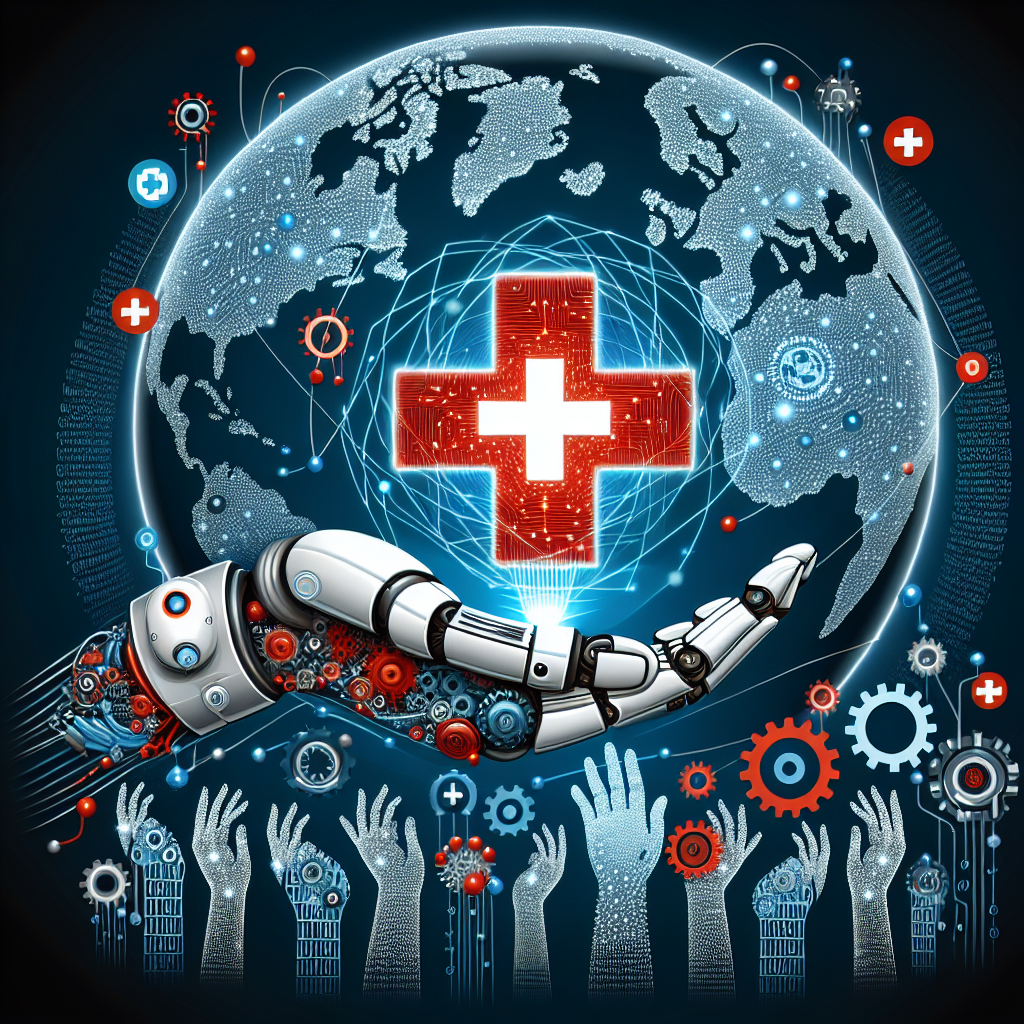The Impact of AI and Machine Learning on Healthcare Accessibility
Introduction
In recent years, artificial intelligence (AI) and machine learning have revolutionized various industries, including healthcare. These technologies have the potential to improve healthcare accessibility by providing faster and more accurate diagnoses, personalized treatment plans, and remote monitoring of patients. In this article, we will explore the impact of AI and machine learning on healthcare accessibility and how these technologies are changing the way healthcare is delivered.
Faster and More Accurate Diagnoses
One of the key benefits of AI and machine learning in healthcare is the ability to provide faster and more accurate diagnoses. These technologies can analyze large amounts of data, such as medical records, lab results, and imaging scans, to identify patterns and trends that may not be apparent to human healthcare providers. AI algorithms can then use this information to make predictions about a patient’s condition and recommend the most appropriate course of action.
For example, AI-powered imaging systems can analyze medical images, such as X-rays, MRIs, and CT scans, to detect abnormalities and assist radiologists in making more accurate diagnoses. These systems can help healthcare providers identify diseases such as cancer, heart disease, and neurological disorders at an earlier stage, leading to better outcomes for patients.
Personalized Treatment Plans
AI and machine learning can also help healthcare providers develop personalized treatment plans for patients based on their individual characteristics, such as genetics, medical history, and lifestyle factors. By analyzing data from electronic health records, wearable devices, and genetic tests, AI algorithms can identify the most effective treatments for each patient and predict how they will respond to different interventions.
For example, AI-powered platforms can analyze a patient’s genetic profile to determine their risk of developing certain diseases and recommend personalized prevention strategies, such as lifestyle changes or medication. These personalized treatment plans can help healthcare providers improve patient outcomes and reduce healthcare costs by avoiding unnecessary treatments and hospitalizations.
Remote Monitoring of Patients
Another way AI and machine learning are improving healthcare accessibility is through remote monitoring of patients. By using wearable devices and mobile apps, healthcare providers can collect real-time data on patients’ vital signs, symptoms, and activity levels, allowing them to monitor their health status and intervene quickly if necessary.
For example, AI-powered monitoring systems can track a patient’s blood pressure, heart rate, and glucose levels, and alert healthcare providers if there are any abnormalities that require attention. This remote monitoring allows patients to receive timely care without having to visit a healthcare facility, reducing the burden on the healthcare system and improving access to care for patients in remote or underserved areas.
Challenges and Limitations
While AI and machine learning have the potential to improve healthcare accessibility, there are also challenges and limitations that need to be addressed. One of the main concerns is the potential for bias in AI algorithms, which can lead to disparities in healthcare outcomes for certain populations. For example, if an AI algorithm is trained on data that is not representative of the entire population, it may make inaccurate predictions for patients from underrepresented groups.
Another challenge is the need for healthcare providers to be trained in using AI and machine learning tools effectively. Many healthcare professionals may not have the necessary skills or knowledge to interpret the results generated by these technologies, leading to potential errors in diagnosis and treatment.
Additionally, there are concerns about the security and privacy of patient data when using AI and machine learning in healthcare. Healthcare organizations must ensure that patient information is protected from unauthorized access and misuse, in compliance with regulations such as the Health Insurance Portability and Accountability Act (HIPAA).
FAQs
Q: How can AI and machine learning improve healthcare accessibility for underserved populations?
A: AI and machine learning can improve healthcare accessibility for underserved populations by providing faster and more accurate diagnoses, personalized treatment plans, and remote monitoring of patients. These technologies can help healthcare providers identify diseases at an earlier stage, develop personalized treatment plans based on individual characteristics, and monitor patients’ health status remotely, reducing the need for in-person visits and improving access to care for patients in remote or underserved areas.
Q: What are some examples of AI applications in healthcare?
A: Some examples of AI applications in healthcare include AI-powered imaging systems for diagnosing diseases, AI algorithms for developing personalized treatment plans, and AI-powered monitoring systems for remote patient monitoring. These technologies can help healthcare providers improve patient outcomes, reduce healthcare costs, and enhance the overall quality of care.
Q: What are some of the challenges and limitations of using AI and machine learning in healthcare?
A: Some of the challenges and limitations of using AI and machine learning in healthcare include the potential for bias in AI algorithms, the need for healthcare providers to be trained in using these technologies effectively, and concerns about the security and privacy of patient data. Healthcare organizations must address these challenges to ensure that AI and machine learning can be used safely and effectively to improve healthcare accessibility for all patients.
Conclusion
AI and machine learning have the potential to revolutionize healthcare accessibility by providing faster and more accurate diagnoses, personalized treatment plans, and remote monitoring of patients. These technologies can help healthcare providers improve patient outcomes, reduce healthcare costs, and enhance the overall quality of care. However, there are also challenges and limitations that need to be addressed, such as bias in AI algorithms, the need for training in using these technologies, and concerns about data security and privacy. By addressing these issues, healthcare organizations can harness the power of AI and machine learning to improve healthcare accessibility for all patients.

